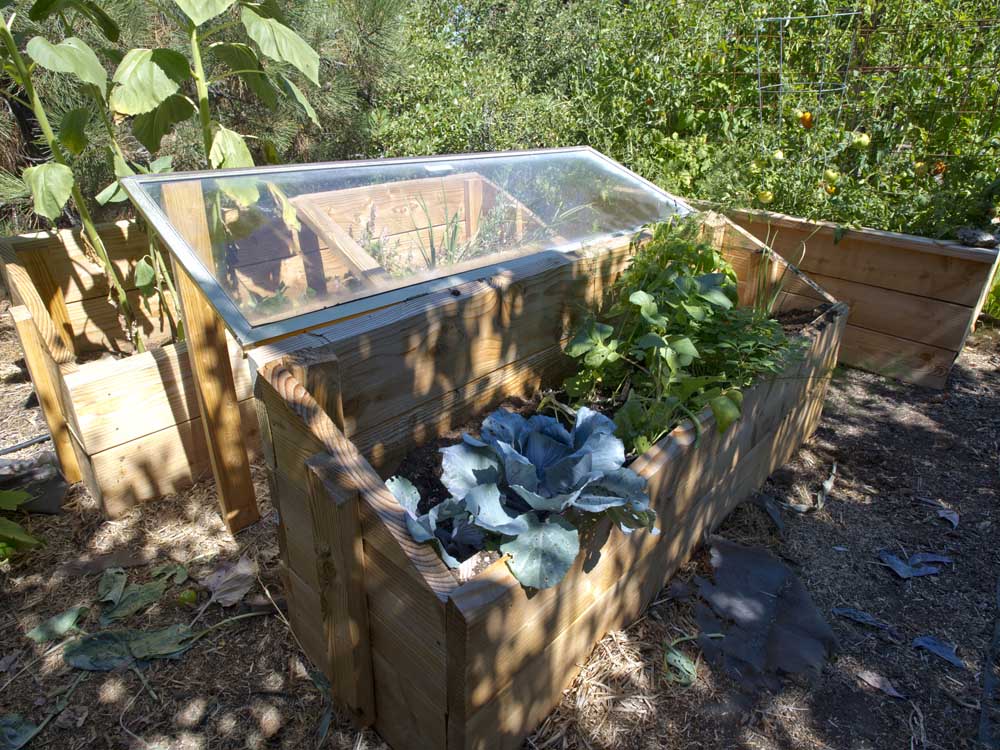Cold weather gardening tips
Published 12:00 am Tuesday, September 16, 2014

- Ryan Brennecke / The BulletinA cold frame garden bed that utilizes an old shower as a glass top.
The summer production of Cobra tomatoes in my greenhouse has waned, which means it’s time to switch gears. I do have gas heat, but since I try to “garden on the cheap,” I use it only in the spring for night protection of my many vegetable and flower seedlings.
This fall I’m going to look at the greenhouse as one gigantic cold frame. I’ll keep the choices simple and hardy. There are winter salad green mixes available that I will try and also mix together leftover lettuce seeds. I didn’t plant my Oregon Sugar peas this spring, so I will try a trellis of those. I also want to try some beets and carrots. The list could go on to Chinese cabbage, kale, Swiss chard, spinach and many other greens.
I listened to a short lecture given by Eliot Coleman, an avid spokesman of four-season gardening who also markets fresh vegetables to high-end restaurants. Coleman gardens in Maine year-round using cold frames and tunnel greenhouses. He was having difficulty marketing Swiss chard. Chefs didn’t like the large leaves and somewhat tough stalk. He decided to grow it as a winter crop in a tunnel greenhouse, pick it very young and label it “Butter Chard.” He says the chefs loved it, and Butter Chard salads started appearing on menus. Oh, the power of marketing! For winter crops, Coleman feels you need 10 hours of daylight for growth. It will be an interesting experiment, and isn’t that half the fun of gardening.
A backyard cold frame can be simply constructed using any transparent material for the top: glass, fiberglass, polyethylene or flexible greenhouse coverings.
Many people use old window sashes, but remember that old window sashes may have been painted with lead-based paint. Make sure the wood isn’t rotting and that the glass is secured firmly in the frame.
The frame, or base, is constructed of wood or could be several layers of cinder blocks, which would retain heat better than the wood base.
To kill weeds, lay down a layer of heavy cardboard or several inches of folded newspapers (no colored sections). Fill the cold frame with a mixture of compost and bagged garden/potting soil. There are many sites on the Internet giving instructions for constructing a cold frame. In addition to acting as a season extender in the fall, a cold frame can be of value in the spring for protecting purchased seedlings or starting your own seeds.
I shared an observation in a spring column that I had several honeysuckle vines to attract the hummingbirds early in the season but lacked in providing fall attractions.
I certainly hit the jackpot in planting Salvia coccinea Red Summer Jewel. The 2011 All-America Selection received the reward for its early and profuse blooming. The dwarf annual sage produces a neon bright red flower on dark green stems. I planted them in a large container that I placed near several raised beds of tomatoes. It’s been fun to watch the hummers sit on the top ring of a tomato cage and suddenly swoop down for a salvia snack. The plant will definitely go on the seed-starting list for 2015.
I have also mentioned I was looking for a bright green chartreuse foliage plant to contrast with a blue spruce. Agastache Golden Jubilee, also known as anise hyssop, turned out to be a triple delight.
I purchased the six-pack based solely on color. I wanted to see if the color combination would appeal to me. It sounded attractive in a color article I had read and shared.
So it was actually after the fact that I decided I should do some research. I learned that the plant is a perennial and hardy to zone 4, which should be safe for most of Central Oregon. It does have square stems, which means it is a member of the mint family but reseeds rather than spreads through the root system. The violet-blue flowers attract bees, butterflies and hummingbirds. Now to the best part: The mint-licorice scented leaves put the plants on the deer-resistant list. I can testify that my daily visitors have no interest. I have seen their tracks right through the middle of the planting and they didn’t bother to stop for a nibble.
In conclusion to my discovery, as always, I should qualify the statement with, “at least not this season.”
— Reporter: douville@bendbroadband.com








